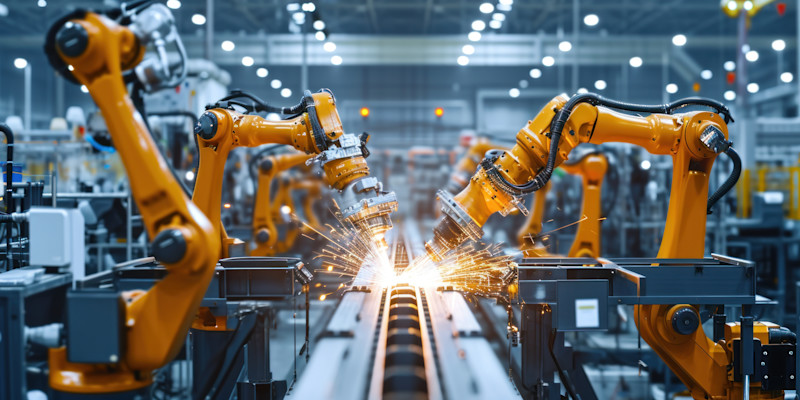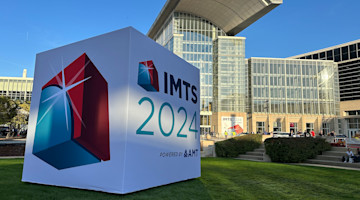TECHNOLOGY
The Global Trade Landscape
In a volatile global trade landscape, small and midsized manufacturers can take a page from GM’s playbook: Double down on your most profitable products and proven processes to stay grounded; invest in flexibility – modular systems, agile teams, and adaptable sourcing – to pivot quickly when needed; and repurpose idle capacity, talent, or technology to explore new markets or applications. You don’t need GM’s size to stay competitive – you need speed, focus, and the willingness to adapt.
INTERNATIONAL
From Tariff Burden to Business Edge: The Power of Bonded Warehouses
In an era of shifting trade policies and escalating tariff pressures, forward-thinking businesspeople are turning to bonded warehouses as a strategic imperative. These facilities offer the ability to defer duty payments – and far more. They are a tool to preserve liquidity, strengthen cash flow, and free up capital for growth while unlocking critical operational flexibility.
By holding goods in a tariff-suspended environment, companies can reexport, reroute, or strategically time market entry, transforming tariffs from a rigid burden into a more controllable variable. This dual advantage – financial efficiency paired with agility – gives companies a powerful lever to optimize margins, safeguard supply chains, and respond swiftly to geopolitical or regulatory shifts.
More than logistical convenience, bonded warehouses function as sophisticated solutions for resilience, ensuring global enterprises remain both profitable and adaptable in an increasingly unpredictable world.
SMARTFORCE
Turning Trade Disruption Into Opportunity Through Talent Development
Shifts in global trade impact more than machines; they reshape the workforce. Tariffs, supply chain realignments, and new facility investments all intensify the demand for skilled labor. For machine tool builders and distributors, talent strategy is as critical as trade strategy. That’s why workforce initiatives at home, like Smartforce Career Pathways at the Smartforce Student Summit at IMTS 2026, matter on a global scale. Pathways will help exhibitors promote entry-level roles to the more than 15,000 students attending IMTS 2026, build visibility with educators, and direct early-career talent to show booths. With an extended presence on IMTS.com through 2026, participating companies strengthen their employer brand while developing a pipeline that can adapt to changing international markets. Trade may be unpredictable, but talent development is a long-term play. Learn more at IMTS.com/Smartforce.
ADVOCACY
Manufacturers Navigate New Trade Rules
Manufacturers in the United States and abroad continue to grapple with the effects of President Donald Trump’s tariffs on imported products, components, and raw materials. Frequent changes in tariff rules and enforcement have made it difficult for companies to adapt and invest with confidence. Industry leaders hope that, once the policy environment stabilizes and more trade agreements are in place, the federal government will establish a clear, consistent process for seeking critical tariff exclusions – particularly for industries and companies whose products are essential to national security. Such a framework would help safeguard key manufacturing capabilities while enabling businesses to remain competitive in the global market. Tax provisions in the One Big Beautiful Bill Act – such as permanent 100% bonus depreciation, expanded Section 179 expensing, and permanent R&D expensing – can help reduce costs for equipment purchases and research investments, providing some relief from uncertainty.
INTELLIGENCE
Reconciling Manufacturing Technology Trade With Broader Trends
While the Bureau of Economic Analysis’ Balance of Payments data for the second quarter of 2025 shows a notable decline in total U.S. net imports, trade data for machine tools and cutting tools tells a different story. Net imports for both categories increased significantly – by over $76 million for cutting tools and $56 million for machine tools compared to the first quarter. This divergence reflects the longer planning cycles and strategic nature of capital equipment purchases. Unlike consumer goods, which respond quickly to economic signals or trade shifts, machine tools are typically ordered well in advance and integrated into broader investment timelines.
As of this writing, net imports of machine tools and cutting tools are projected to begin tracking more closely with broader trade trends as supply chains adjust and purchasing patterns normalize across sectors. This convergence would bring capital goods trade more in line with the overall import landscape reflected in the BEA’s data.
To read the rest of the International Issue of MT Magazine, click here.






